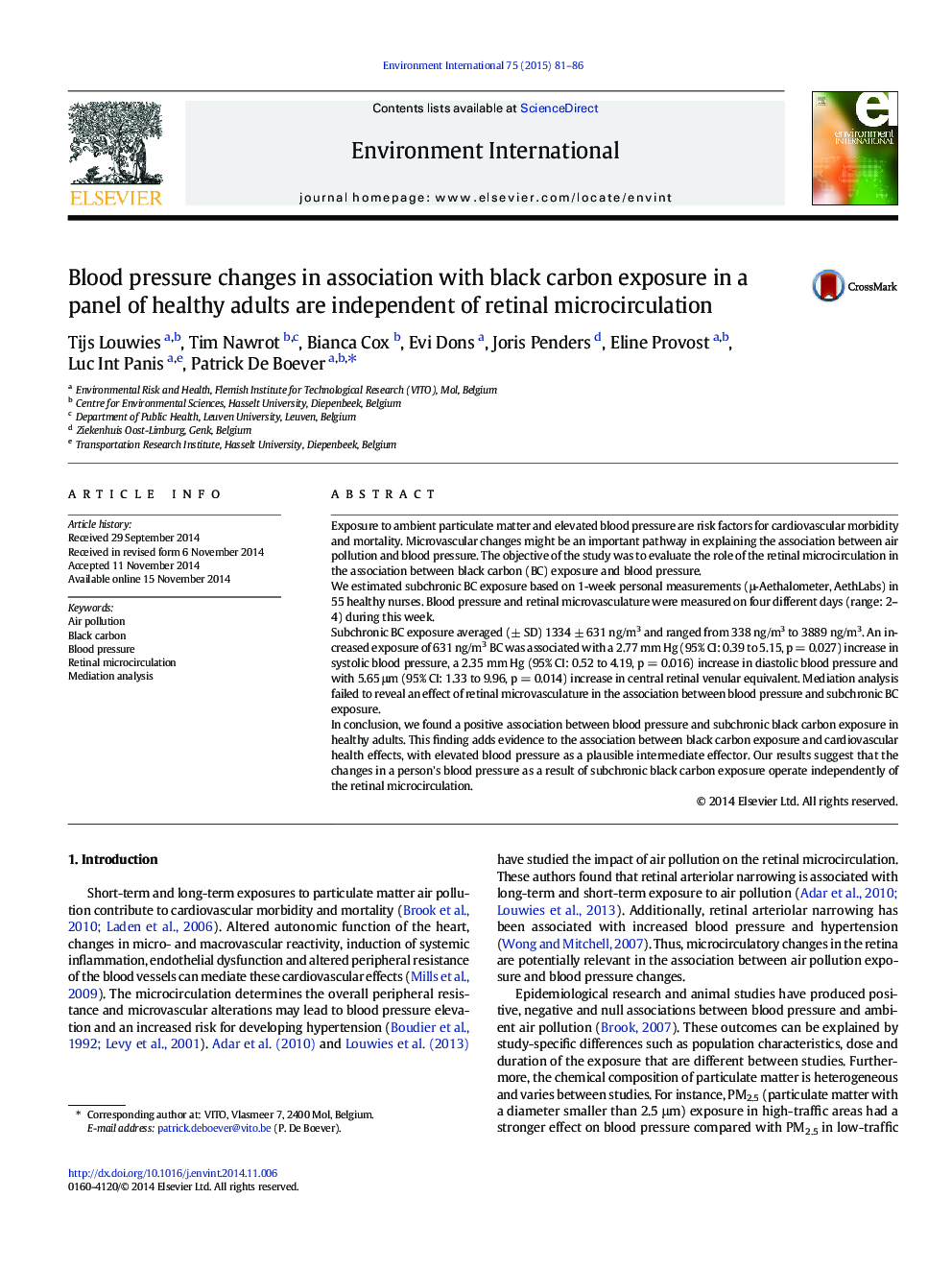| Article ID | Journal | Published Year | Pages | File Type |
|---|---|---|---|---|
| 4422695 | Environment International | 2015 | 6 Pages |
•We monitored 55 healthy nurses during a 1-week period.•Subchronic black carbon exposure was estimated based on personal measurements.•Retinal microvasculature and blood pressure were measured at four time points.•Blood pressure and subchronic black carbon exposure were positively associated.•Retinal microcirculatory changes did not mediate the association.
Exposure to ambient particulate matter and elevated blood pressure are risk factors for cardiovascular morbidity and mortality. Microvascular changes might be an important pathway in explaining the association between air pollution and blood pressure. The objective of the study was to evaluate the role of the retinal microcirculation in the association between black carbon (BC) exposure and blood pressure.We estimated subchronic BC exposure based on 1-week personal measurements (μ-Aethalometer, AethLabs) in 55 healthy nurses. Blood pressure and retinal microvasculature were measured on four different days (range: 2–4) during this week.Subchronic BC exposure averaged (± SD) 1334 ± 631 ng/m3 and ranged from 338 ng/m3 to 3889 ng/m3. An increased exposure of 631 ng/m3 BC was associated with a 2.77 mm Hg (95% CI: 0.39 to 5.15, p = 0.027) increase in systolic blood pressure, a 2.35 mm Hg (95% CI: 0.52 to 4.19, p = 0.016) increase in diastolic blood pressure and with 5.65 μm (95% CI: 1.33 to 9.96, p = 0.014) increase in central retinal venular equivalent. Mediation analysis failed to reveal an effect of retinal microvasculature in the association between blood pressure and subchronic BC exposure.In conclusion, we found a positive association between blood pressure and subchronic black carbon exposure in healthy adults. This finding adds evidence to the association between black carbon exposure and cardiovascular health effects, with elevated blood pressure as a plausible intermediate effector. Our results suggest that the changes in a person's blood pressure as a result of subchronic black carbon exposure operate independently of the retinal microcirculation.
